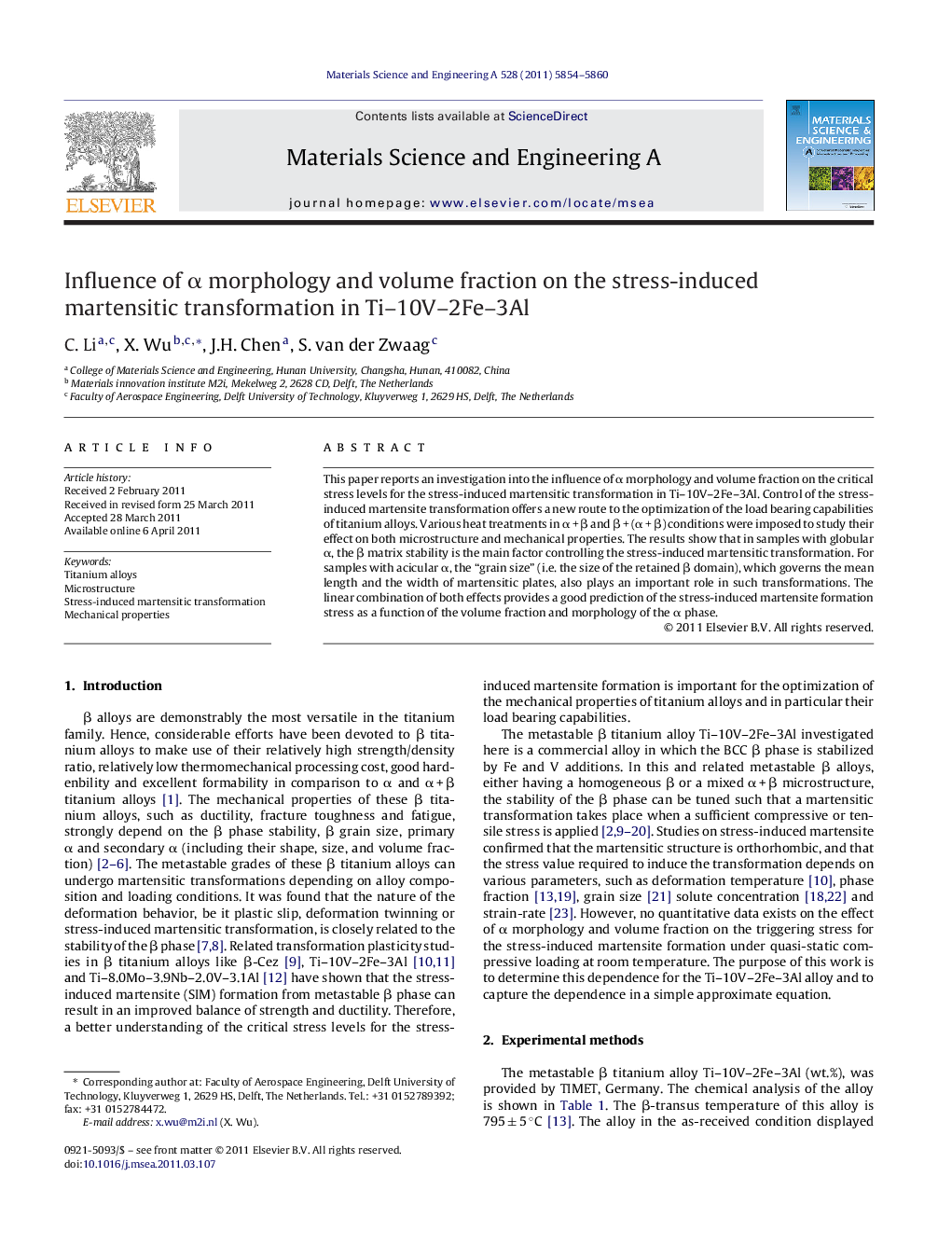| کد مقاله | کد نشریه | سال انتشار | مقاله انگلیسی | نسخه تمام متن |
|---|---|---|---|---|
| 1578300 | 1001203 | 2011 | 7 صفحه PDF | دانلود رایگان |

This paper reports an investigation into the influence of α morphology and volume fraction on the critical stress levels for the stress-induced martensitic transformation in Ti–10V–2Fe–3Al. Control of the stress-induced martensite transformation offers a new route to the optimization of the load bearing capabilities of titanium alloys. Various heat treatments in α + β and β + (α + β) conditions were imposed to study their effect on both microstructure and mechanical properties. The results show that in samples with globular α, the β matrix stability is the main factor controlling the stress-induced martensitic transformation. For samples with acicular α, the “grain size” (i.e. the size of the retained β domain), which governs the mean length and the width of martensitic plates, also plays an important role in such transformations. The linear combination of both effects provides a good prediction of the stress-induced martensite formation stress as a function of the volume fraction and morphology of the α phase.
► Stress-induced martensitic transformation is absent with α volume fraction higher then critical values, independently to α morphology.
► The influence of the β domain size and the β phase stability on SIM can be written as: σSIM(Moeq, d)=σsi(d)|Moeq0+Δσst(Moeq−Moeq0)σSIM(Moeq, d)=σsi(d)Moeq0+ΔσstMoeq−Moeq0.
► β domain size has a linear positive effect on the triggering stress of SIM transformation.
Journal: Materials Science and Engineering: A - Volume 528, Issue 18, 15 July 2011, Pages 5854–5860